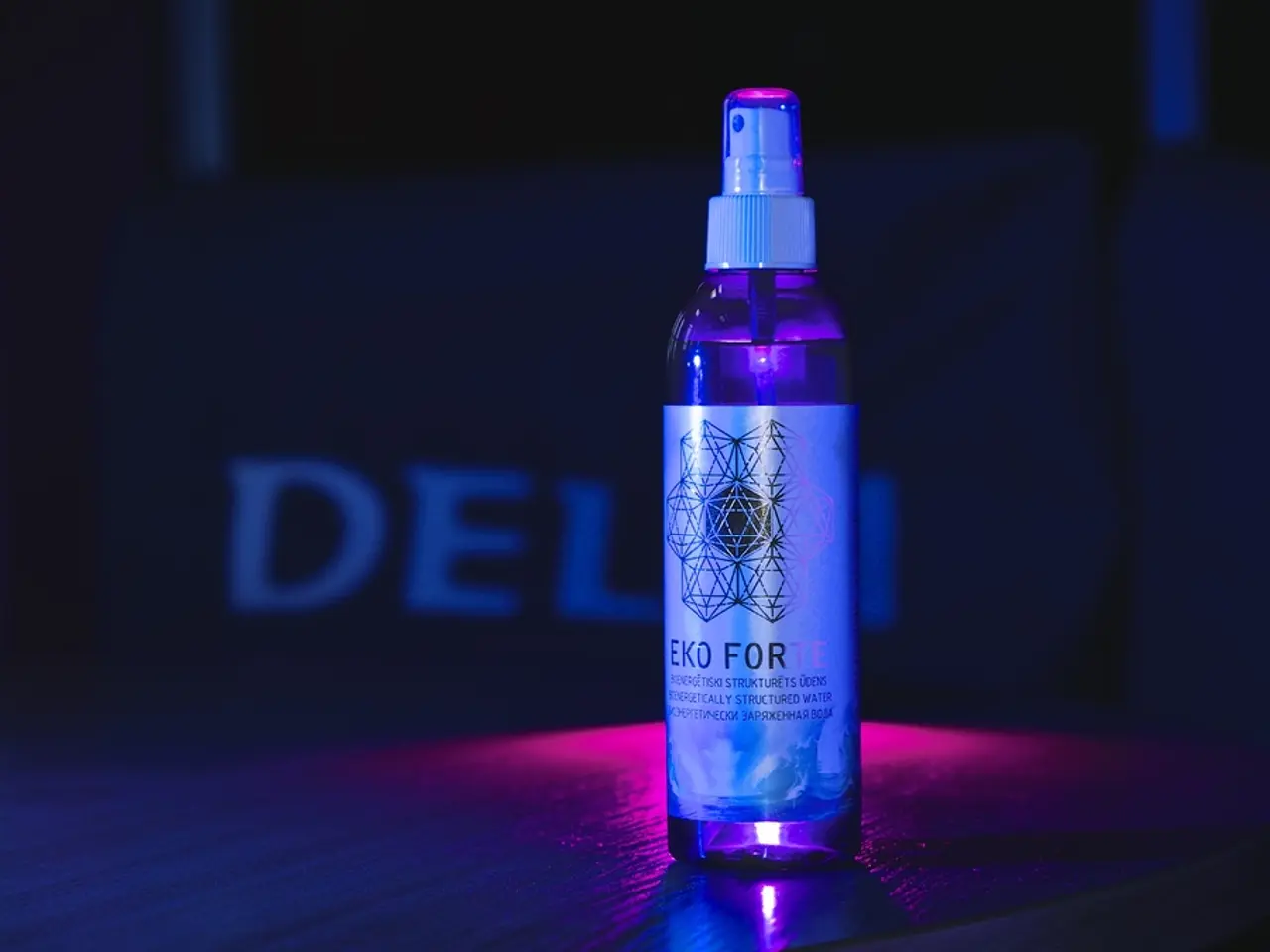Procedures and Tips to Minimize Excessive Body Hair Regrowth
Go ahead, embrace your body, hair and all! If you're one of those who can't stand even a hint of fuzz, there are options galore to help you achieve that smoother-than-a-Sphinx-cat look. Here's a rundown of long-term hair removal techniques to banish unwanted body hair for good (or at least for a good long while).
Getting to the root of it
Unwanted body hair can pop up in the strangest places – between the brows, on your back, or the hard-to-reach corners. But sometimes, what you consider excess hair is just normal, healthy growth. That's fine, too! Some people suffer from hirsutism, which is characterized by excessive hair growth in areas where women usually don't have much. While the causes remain a mystery, it can be due to issues like PCOS, thyroid disorders, or hormonal changes during menopause. If you're experiencing excessive hair growth, it's time to consult a healthcare provider.
5 things to try when razors just won't cut it
Dealing with regrowth after regular waxing, shaving, or sugaring? It's time to explore longer-term solutions. The following techniques target the follicle's root, leading to deeper, longer-lasting changes. While they're not exactly permanent, these options will keep hair away a lot longer than your traditional shave.
1. Electrolysis
Shortwave radio frequencies? Yes, they can zap unwanted hair for good, according to the American Academy of Dermatology (AAD).
How long it lasts: Electrolysis is considered a permanent hair removal solution by the AAD. However, multiple sessions may be required to see lasting results.
How it works: Electrolysis involves fine needles inserted directly into the follicles and shortwave radio frequencies to destroy the hair.
How to get it: The procedure should be performed by a board-certified dermatologist or electrologist. Follow-up appointments every 1-2 weeks may be necessary.
How much it costs: $35-$100 per session for an average of 8-12 sessions.Who should get it and where: Electrolysis can be performed anywhere on the body and works on most hair and skin types. It's effective on light, fine hair, which lasers can't typically remove. It's not recommended during pregnancy.Potential side effects: Side effects may include pain, redness, and skin irritation. Rare but serious complications include scarring, infection, or keloids (scar tissue overgrowth).
2. Laser Hair Removal
Laser hair removal uses concentrated light beams to target hair follicles, resulting in reduced hair growth over time.
How long it lasts: According to the AAD, laser hair removal is considered a permanent solution, lasting for several months to years.
How it works: High-heat lasers are aimed at hair follicles to prevent new hair growth.
How to get it: Like electrolysis, multiple sessions are required for optimal results, about 4-8 treatments every 4-8 weeks.
How much it costs: $250 per session for an average of 4-6 treatments.Who should get it and where: Laser hair removal can be done anywhere on the body, except the eye area. It tends to work best on thicker, darker hair.Potential side effects: Common side effects may include redness and skin irritation; temporary pigment changes and blistering may also occur, especially in darker skin tones. Rare side effects include scarring.
3. Prescription Creams
Prescription creams tend to last longer than traditional shaving and depilatory creams without much effort. Eflornithine, for example, lasts up to 8 weeks.
How it works: Eflornithine is applied twice daily to inhibit the production of enzymes that stimulate hair growth.
How to get it: Since these are prescriptions, consult a dermatologist.
How much it costs: 1 month of treatment costs about $50.Who should get it and where: Eflornithine is only formulated for facial hair and tends to work best for women.Potential side effects: Side effects may include burning, rashes, and acne breakouts due to follicle impaction.
4. Chemical Depilation
Chemical depilation isn't exactly permanent, but it's the next best thing we have so far. These over-the-counter treatments are tried and true and can be found at your local drugstore.
How long it lasts: Depilation doesn't penetrate the hair follicle, meaning results will only last for a couple of weeks.
How it works: Chemicals in these creams weaken keratin in the hair, causing it to fall out.
How to get it: Pick some up at your local drugstore or online.
How much it costs: Typically $10-$30 per bottle.Who should get it and where: Depilatories can be used anywhere from your chin to your calves; some are specially formulated for the face or pubic area.Potential side effects: Chemical burns, rashes, and blisters may occur. Be cautious and perform a patch test before trying a larger area.
5. Professional Tweezing and Waxing
If done by a certified professional, tweezing and waxing can last up to 2 months. While they're not permanent, they're a more effective alternative to shaving.
How long it lasts: Hair is removed directly from the root, with results lasting between 2 to 8 weeks.
How it works: Hair is stripped directly from the root.
How to get it: Visit a certified aesthetician.
How much it costs: Ranges from $15 for your armpits to over $100 for a Brazilian.Who should get it and where: Tweezing can be performed anywhere on the body; waxing should not be done on the ears, nipples, or eyelashes.Potential side effects: Mild rashes and irritation may occur from either waxing or tweezing, but these are typically temporary.
6. Clean and Green Methods
If you prefer a more natural approach, there are hair removal techniques that don't involve harsh chemicals, lasers, or electric currents.
- Sugaring: This method involves a sugar-based paste and extracts hair with the grain, which is said to be less painful and more effective.
- Honey instead of wax: If traditional hair removal wax irritates your skin, honey can be a suitable alternative.
- Spearmint tea: Some women with PCOS or hirsutism swear by drinking mint tea twice daily to reduce excess hair growth.
- Dermaplaning: Dermaplaning involves shaving the skin with a super sharp blade, leaving it extra smooth.
- Epilators: Electronic devices with a rotating tweezer head, allowing you to pluck out hair in large quantities.
- Threading: Threading involves pulling hair from the follicle with a cotton thread.
Avoiding a shave that's a little too close
When in doubt, it's best to visit a professional for treatments like laser hair removal, electrolysis, and waxing. If you must go the DIY route, be sure to do your research, follow instructions carefully, and seek medical attention if you experience any adverse reactions.
Involving Medical Expertise
If your hair keeps growing back after trying various hair removal treatments, it could signal underlying health conditions like PCOS or hyperthyroidism. Consult a healthcare provider for a complete assessment and personalized treatment. In some cases, birth control pills, anti-androgen meds like Proscar or Aldactone, or hormone therapy may be prescribed to address the root cause.
- The American Academy of Dermatology suggests that shortwave radio frequencies, used in electrolysis, can permanently remove unwanted hair.
- Eflornithine, a prescription cream, inhibits enzymes that stimulate hair growth and lasts up to 8 weeks for facial hair.
- If desired, individuals can try natural methods such as sugaring, using honey for hair removal, drinking spearmint tea to potentially reduce excess hair growth, or dermaplaning for smooth skin.
- Hormone-related disorders like PCOS or hyperthyroidism may cause excessive hair growth and should be assessed by a healthcare provider to determine appropriate treatment options.




